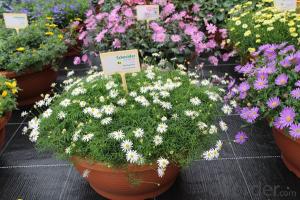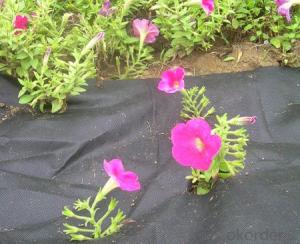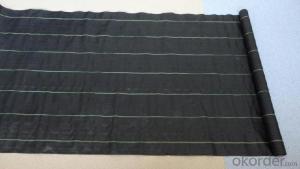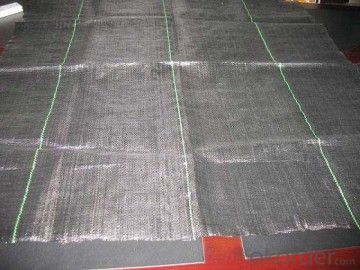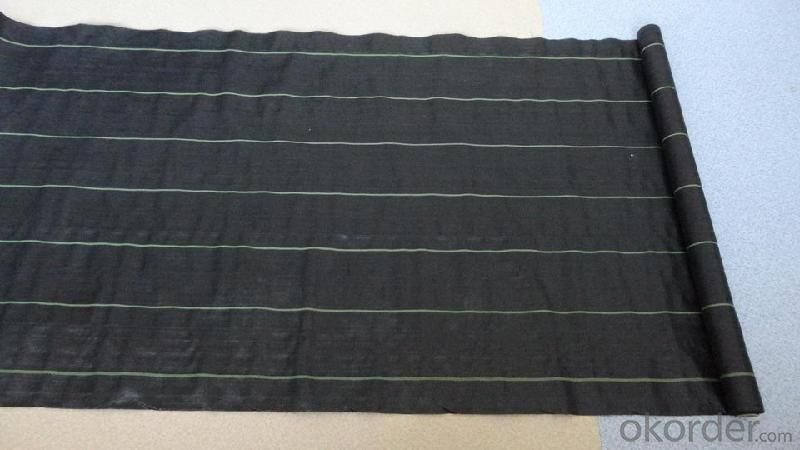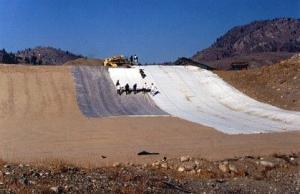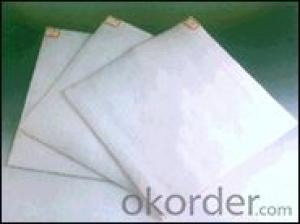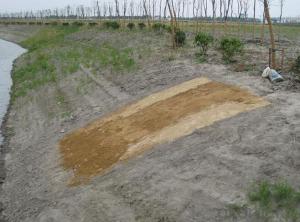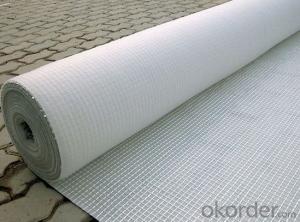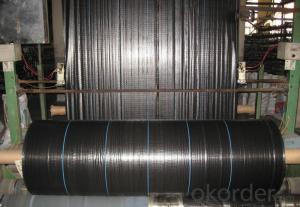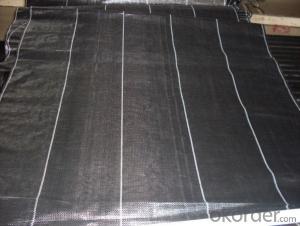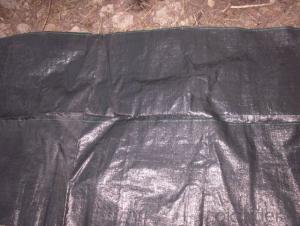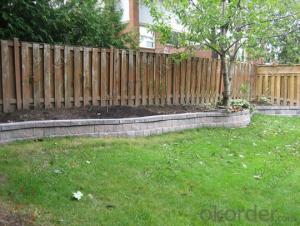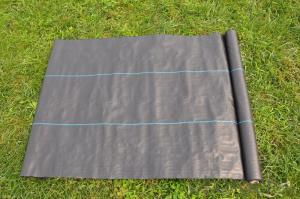Biodegradable PP Spunbond Nonwoven French Drain Geotextile Weed Control Mat Roll
- Loading Port:
- Qingdao
- Payment Terms:
- TT OR LC
- Min Order Qty:
- 500 m²
- Supply Capability:
- 500000 m²/month
OKorder Service Pledge
OKorder Financial Service
You Might Also Like
Product Description
The weed control mat is made of environmentally friendly raw materials, pp woven fabric. It used to prevent the growth of weed, without the use of potentially dangerous chemical sprays or labor intensive hoeing. Once installed, weed mat will continue providing protection for years without maintenance.
They are permeable fabrics, which allow air, water and nutrients to pass through, and designed to block out the sun to reduce photosynthesis and stop weed growth.
Specification
ROPERTY | ASTM TEST METHOD | Minimum Average | Minimum Average |
Mass per unit Area | ASTM D-5261 | 3.0 oz/yd2 | 100 g/m2 |
Grab Tensile | ASTM D-4632 | 145 lbs | 660 N |
Grab Elongation | ASTM D-4632 | 15% | 15% |
Trapezoid Tear | ASTM D-4533 | 55 lbs | 245 N |
Water Flow Rate | ASTM D-4491 | 5 gal/min/ft2 | 203 L/min/m2 |
UV Resistance | ASTM D-4355 | 70% @ 500 hrs | 70% @ 500 hrs |
ROLL DIMENSIONS | |||
Roll Width | 0.9m (3’) | 1.8m (6') | 2.7m (9') |
Roll Length | 91.4m (300’) | ||
Roll Weight | 8kgs (17lbs) | 16kgs (34lbs) | 24kgs (52bs) |
Features
1. Weed suppressant and drainage control landscaping fabric
2. Easy to use, Environmentally friendly
3. Allows water, air and nutrients through, suppressing weeds without the use of chemicals
4. Reduces the level of watering required due to the slower rate of water evaporation
Application
1. Excellent Weed Control
2. Moisture, fertilizers, air reach plants to allow for healthy soil
3. Good water and air permeability
4. Exceptional toughness and strength
5. Durable, tear-resistant; won't rot or mildew
6. Lightweight, easy to install, follows natural ground contours
7. Ideal for use in landscaped beds, under decks and walkways.
Packaging & Delivery
| Packaging Details: | Packed In Roll Or In Bales Or Cartons Or According To Customers Requirement |
| Delivery Detail: | 20 Days After Order Confirmed |

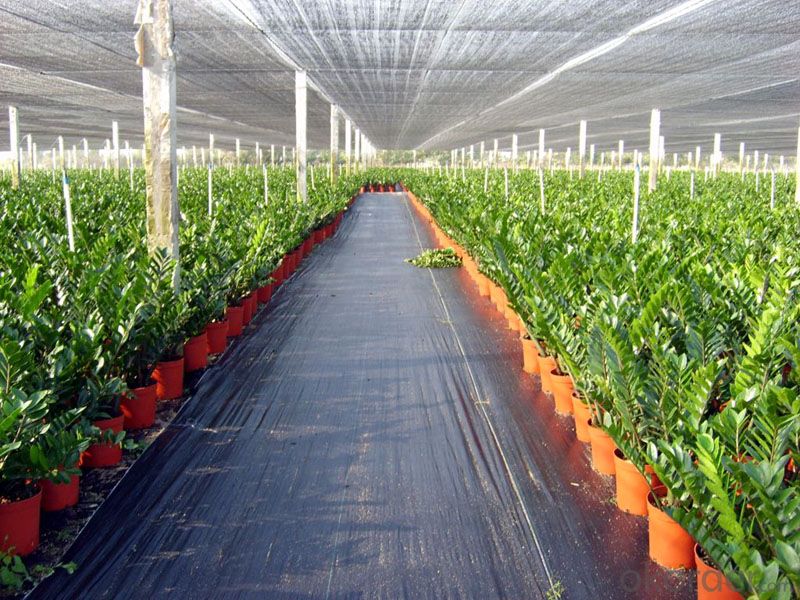
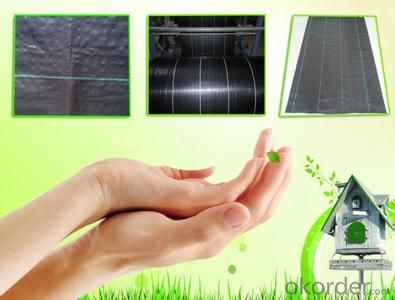
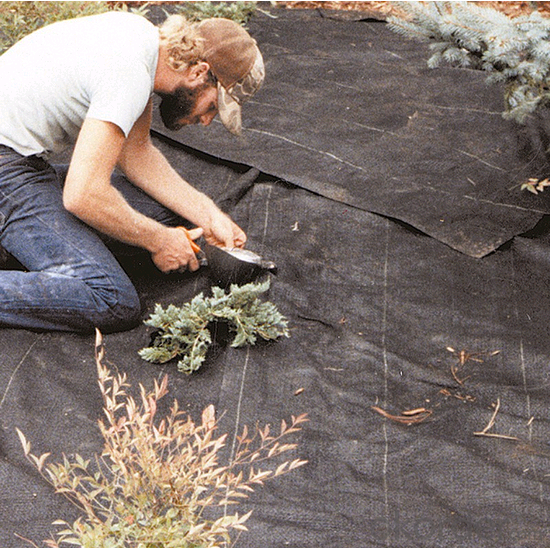
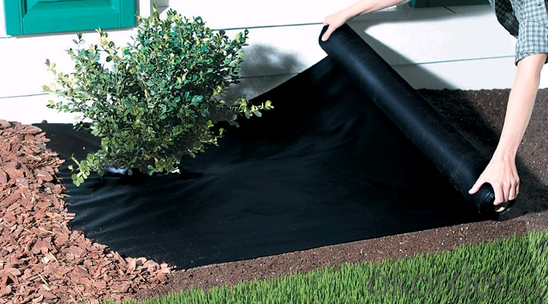
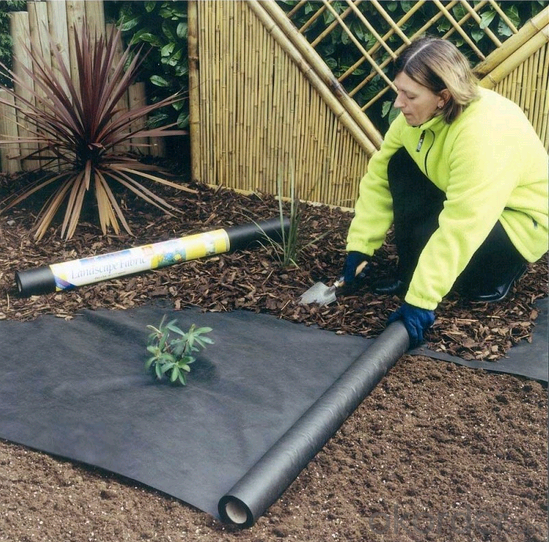
FAQ
1, Samples Policy
Samples are free, but the freight is on customers' charge
Samples will usually be sent out in one day.
2, Prices
As for the prices, we need you to provide us weight, color, width and usage so that
we can quote you best.
3, How to place an order?
Inquiry
Reply
Sample
Contract
Receiving deposit& production
Testing& Packing
Delivery
Receiving
- Q: What are the different applications of geotextiles in agriculture?
- Geotextiles have various applications in agriculture, including erosion control, soil stabilization, weed control, and drainage management. They are used in the construction of embankments, terraces, and retaining walls to prevent soil erosion and provide stability. Geotextiles also act as a barrier to weed growth, reducing the need for herbicides and manual weeding. Additionally, they facilitate proper drainage by allowing water to flow through while preventing soil erosion. Overall, geotextiles play a crucial role in enhancing agricultural practices and improving crop yields.
- Q: Can geotextiles be used for reinforcement in asphalt overlays?
- Yes, geotextiles can be used for reinforcement in asphalt overlays. Geotextiles act as a separator and provide reinforcement by distributing stress and preventing the mixing of different layers. They help in reducing reflective cracking and increasing the lifespan of the asphalt overlay.
- Q: How do geotextiles improve the performance of dams?
- Geotextiles improve the performance of dams by providing various benefits such as erosion control, filtration, separation, and reinforcement. They prevent soil erosion by stabilizing the soil and preventing the loss of fine particles. Geotextiles also act as a filtration layer, allowing water to pass through while retaining soil particles. They provide separation between different soil layers, preventing intermixing and maintaining the stability of the dam structure. Additionally, geotextiles can reinforce the soil, increasing its strength and improving the overall stability and durability of the dam.
- Q: How do geotextiles prevent soil contamination?
- Geotextiles prevent soil contamination by acting as a barrier that separates the soil from potentially harmful substances, such as pollutants or contaminants. It helps to filter and retain these substances, preventing them from leaching into the soil and affecting its quality. Geotextiles also aid in erosion control, reducing the risk of soil contamination caused by sediment runoff.
- Q: What is the difference between a hard pipe and a mesh plastic blind ditch?
- Different products, all play the role of drainage ditch need to wrap geotextered soft water pipe does not require geotextile package. Huazhi geotextile material answer
- Q: What equipment is geotextile equipment?
- This I do not how clear, and detailed you can go to Long Yun machinery manufacturers to see, his home is specialized in producing this equipment manufacturers, hoping to help you to adopt.
- Q: What are the environmental benefits of using geotextiles?
- Geotextiles offer several environmental benefits, such as erosion control by stabilizing soil and preventing sediment runoff, enhancing water filtration and drainage systems, reducing the need for chemical herbicides and pesticides, and promoting the growth of vegetation. Additionally, they can help in the restoration and protection of ecosystems, reduce construction waste by extending the lifespan of infrastructure, and minimize the use of non-renewable materials like aggregates.
- Q: Are there any geotextiles on the upstream dam slope?
- Supply geotextile.
- Q: How do geotextiles help with pavement maintenance?
- Geotextiles help with pavement maintenance by acting as a barrier between the subgrade and the pavement layers, preventing the mixing of soils. They provide reinforcement to the pavement structure, distributing loads more evenly and reducing the occurrence of cracks and potholes. Additionally, geotextiles help with drainage, promoting water infiltration and preventing the accumulation of water that can damage the pavement. Overall, geotextiles enhance the durability and longevity of pavements, reducing the need for costly repairs and maintenance.
- Q: How do geotextiles improve the performance of geopipes?
- Geotextiles improve the performance of geopipes by providing reinforcement, filtration, and separation functions. They help distribute the loads applied on the geopipe, preventing soil erosion and enhancing its overall strength and stability. Geotextiles also act as a filter, allowing water to pass through while preventing the migration of fine particles, which can clog the pipe. Additionally, they separate incompatible soils, ensuring optimal performance of the geopipe system.
Send your message to us
Biodegradable PP Spunbond Nonwoven French Drain Geotextile Weed Control Mat Roll
- Loading Port:
- Qingdao
- Payment Terms:
- TT OR LC
- Min Order Qty:
- 500 m²
- Supply Capability:
- 500000 m²/month
OKorder Service Pledge
OKorder Financial Service
Similar products
Hot products
Hot Searches
Related keywords
